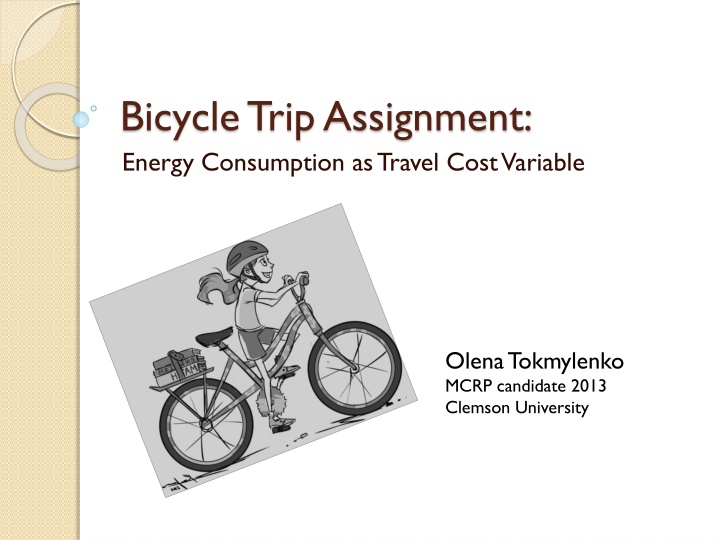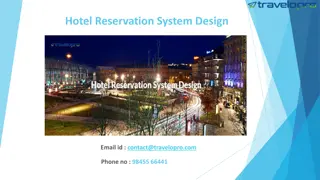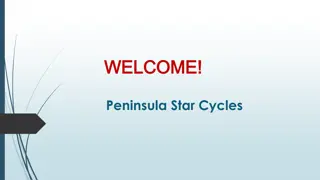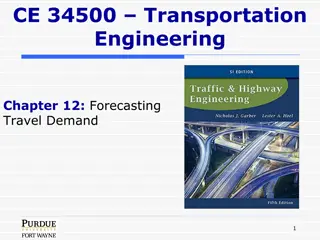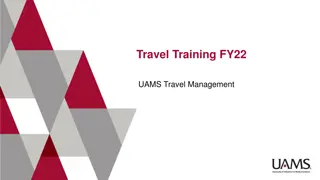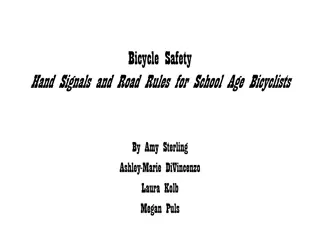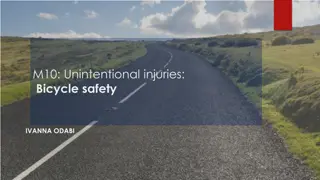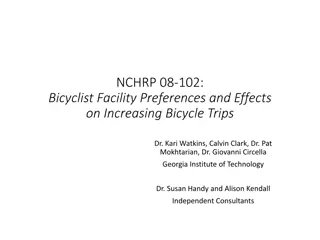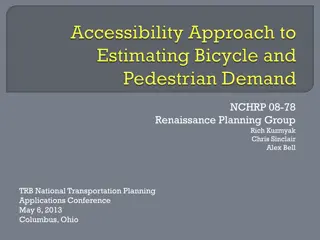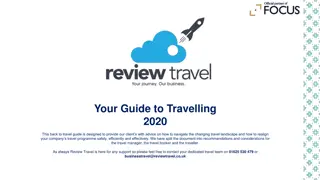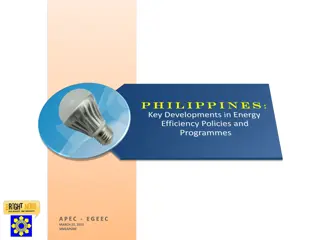Bicycle Trip Assignment: Understanding Energy Consumption for Travel Cost Optimization
Analyzing the energy consumption as a variable for travel cost on bicycle trips using a model structure that includes factors like gender, age, athleticism, slope, mass, wind resistance, and more. The study also explores the impact of rider proficiency levels and physiological conditions on energy expenditure and travel time, aiming to determine the optimal route. Additionally, the research delves into the characteristics of different types of bicycles and riders, along with constant parameters like velocity, mass, slope, and headwind velocity.
Download Presentation

Please find below an Image/Link to download the presentation.
The content on the website is provided AS IS for your information and personal use only. It may not be sold, licensed, or shared on other websites without obtaining consent from the author.If you encounter any issues during the download, it is possible that the publisher has removed the file from their server.
You are allowed to download the files provided on this website for personal or commercial use, subject to the condition that they are used lawfully. All files are the property of their respective owners.
The content on the website is provided AS IS for your information and personal use only. It may not be sold, licensed, or shared on other websites without obtaining consent from the author.
E N D
Presentation Transcript
Bicycle Trip Assignment: Energy Consumption as Travel Cost Variable Olena Tokmylenko MCRP candidate 2013 Clemson University
What we think people experience What people actually experience
Model Structure gender age athleticism slope riders mass wind resistance Physiological conditions etc. distance speed power Energy Expenditure Travel Time Optimal route
Level of proficiency Group A Advanced or experienced Group B Basic or less confident Group C Children
Wingate Anaerobic Test Classification of Peak Power and Anaerobic Capacity for Female and Male NCAA Division I Collegiate Athletes
Human Power Aerobic Capacity vs Anaerobic capacity Functional Threshold Power Critical Power 1 (anaerobic = critical + Sustained Power work capacity ) power duration
Bicycling Power = + + + 2 [ V ( ) ( )] W K V mg s C V w A w R Where
Characteristics of five types of bicycle and rider Roadster (Utility) bicycle 0.5 1.2 15 77 0.008 Sports bicycle Road racing bicycle 0.33 0.9 9 75 0.003 Frontage area, A (m ) Drag coefficient, ?? Bicycle mass (kg) Rider mass (kg) Rolling resistance coefficient, ?? Force of rolling resistance, ??(N) Aerodynamic drag factor, ??(kg/m) 0.4 1 11 75 0.004 7.218 3.374 2.471 0.368 0.245 0.182 Source: Bicycling Science David G. Wilson
Constant parameters Metric Measurement System Velocity, m/s Rider s Mass, kg Slope,% Headwind Velocity, m/s 5 70 0 3 U.S. Measurement System Velocity, mi/h Rider s Mass, lb Slope,% Headwind Velocity, mi/h ~ 11 ~155 0 ~7
Bicycling Power 1400 1400 1200 1200 1000 1000 power, watt power, watt 800 800 600 600 400 400 200 200 0 0 1 2 3 4 5 6 velocity, m/s 7 8 9 10 11 12 13 14 15 50 55 60 65 70 75 80 85 90 95 100 105 110 115 120 mass, kg 1400 1400 1200 1200 1000 1000 power, watt power, watt 800 800 600 600 400 400 200 200 0 0 0 1 2 3 4 5 6 7 8 9 wind velocity, m/s slope
Types of bicyclists Utilitarian Recreational
Model Assumptions Utilitarian cyclists Different level of skills with a stress to average Decision is made and origins and destinations are known
Model Structure gender age athleticism slope riders mass wind resistance Physiological conditions etc. distance speed power Energy Expenditure Travel Time Optimal route
Conclusion One of the most important factor that affect bicycling power expenditure can be addressed by planners while designing infrastructure The results of the model can minimize the cost of data collection and enrich behavior models The effective planning based on travel time and energy expenditure can provide better experience to the cyclists
Next Steps Propose classes of cyclist based on their power level Apply slope-speed-power relationship to the road network to determine travel time Measure energy expenditure of the riders Test the model on real city network
Questions? For questions or propositions contact : Olena Tokmylenko otokmyl@clemson.edu
